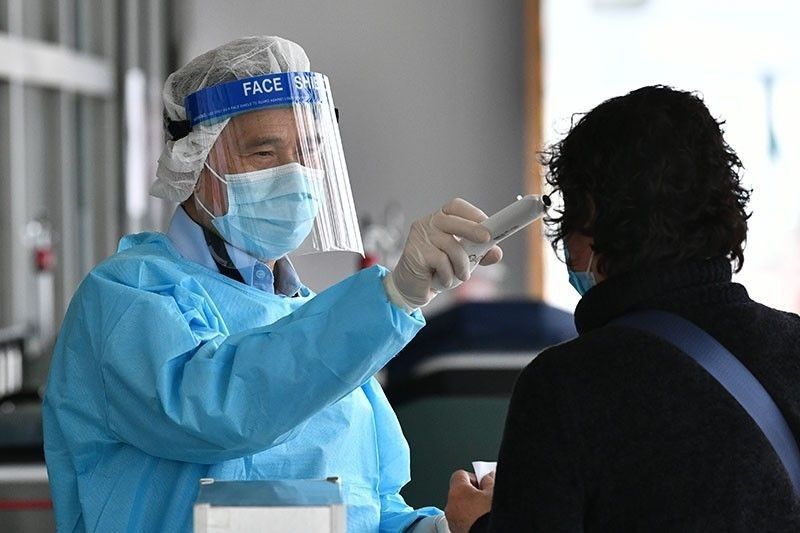DOH: 18 more cases of UK coronavirus variant, total now at 62

MANILA, Philippines — Health authorities confirmed Sunday 18 more cases of the B.1.1.7 coronavirus variant in the Philippines, bringing the total B.1.1.7 variant cases in the country to 62 since it was first recorded in the country on January 7.
The new cases of the variant, first reported in the United Kingdom and feared to be more infectious, were among the seventh batch of 757 samples sequenced by the University of the Philippines-Philippine Genome Center on Thursday, February 18, the Department of Health disclosed.
In a statement issued Sunday afternoon, the department reported that an additional sample from the Central Visayas belonging to the last genome sequencing batch was found to have both N501Y and E484K mutations.
It also said that while two among the 80 samples from the Central Visayays sequenced in the seventh batch were also found to have both mutations, bringing the total to 34.
"The DOH is currently investigating compliance to isolation protocols and the contact tracing done for these ROFs," the statement read.
Investigations, tracing underway
The DOH in its statement said that it had already notified the Center for Health Development Central Visayas of the additional cases found with mutations.
Case investigation and contact tracing for these new detections have also been jointly initiated by the DOH through the Bureau of Quarantine, Centers for Health Development, and regional epidemiology and surveillance units.
The department added that it was preparing to submit its new findings to the World Health Organization and the Global Initiative on Sharing All Influenza Data along with the UP-PGC and UP-NIH "to aid in the ongoing global effort to track and study new and emerging genomic changes in the SARS-COV-2 virus, which vaccine manufacturers may use to to recalibrate vaccines and ensure efficacy against COVID-19."
"The DOH calls on concerned LGUs where cases with the variant of concern and mutations with potential clinical significance have been detected to closely monitor their respective local situations and implement measures in accordance with the national PDITR strategy as needed, such as localized lockdowns, active case finding, immediate contact tracing, and isolation/quarantine. The DOH further calls on LGUs to immediately flag sharp upticks in cases to the DOH in order to activate targeted biosurveillance activities," the DOH said in its statement.
Case breakdown
- The DOH in its statement added that 13 of the B.1.1.7 cases are Filipinos returning from overseas who entered the country between January 3 to 27, all of whom are now tagged as recovered.
- Three other B.1.1.7 cases are from the Cordillera Administrative Region, two of whom, both 12-year-old males, are connected to the original cluster from Samoki, Bontoc, Mountain Province.
- The third case, a 41 year-old female, is connected to the first La Trinidad cluster.
- All 3 cases are now tagged as recovered and all close contacts have completed quarantine following immediate contact tracing and isolation.
Why does this matter?
- Earlier, the health department assured the public that there is not enough evidence indicating that the more infectious coronavirus variant
- As of this publishing, exactly 559,288 cases of the coronavirus have been recorded in the Philippines since the pathogen first emerged over a year ago.
- Despite the rise in cases, the government's coronavirus task force continues to mull the imposition of a nationwide modified general community quarantine, reportedly to offset the effects of the pandemic on the country's economy.
- Health Secretary Francisco Duque III said earlier on Friday that it was still unclear if the surge in cases in Central Visayas was caused by the recently detected virus mutations, adding the region’s own shift to MGCQ, the lowest quarantine level there is, could be one of the reasons.
"The Department reiterates that as long as COVID-19 transmission persists, our strengthened biosurveillance will continue to detect mutations. The DOH emphasizes the need to strictly practice and enforce minimum public health standards in order to lower infection rates and consequently reduce the risk of mutations of potential clinical and epidemiological significance. The goal is to bring down transmission rates to levels where biosurveillance can no longer detect mutations of interest," the department also said.
— Franco Luna with reports from Gaea Katreena Cabico
- Latest
- Trending


































